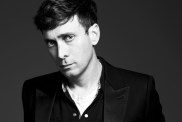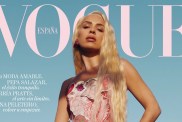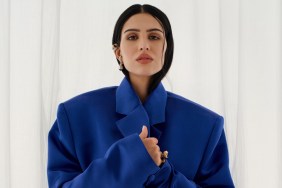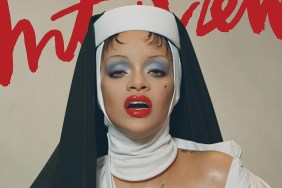On November 28,1973, the fashion world flocked to the Palace of Versailles in Paris for an international runway show that drew the who’s who of the society set, from Princess Grace of Monaco to Andy Warhol. During the extravagant spectacle, later dubbed “the battle of Versailles,” five relatively unknown American designers faced off with five established European designers. In a surprising turn of events, the American designers and an unprecedented number of black models stole the show and forever changed the face of fashion.
That groundbreaking fashion show is now the subject of a new, must-read book entitled The Battle of Versailles: The Night American Fashion Stumbled into the Spotlight and Made History by Pulitzer Prize-winning fashion journalist Robin Givhan. We caught up with Givhan while she was covering Paris Fashion Week for The Washington Post to get the scoop.
theFashionSpot: Why did you choose to write about “the battle of Versailles” for your first book?
Robin Givhan: The idea was really handed to me on a silver platter. I’d heard bits about the event over the years. Then in 2011, The Metropolitan Museum of Art hosted a luncheon celebrating the black models who’d been in the show. Shortly after that, a literary agent called me. He thought the story would make a great book and asked if I’d be interested. I tossed some ideas out off the top of my head and he said, “Yes! That’s it exactly.” And I was off and running.
tFS: What was your writing process like?
RG: It was a great — although solitary — experience. I had a great group of people to interview; the models, Stephen Burrows, Oscar de la Renta, Donna Karan, Pierre Bergé, Givenchy. Plus, journalists who had been at Versailles, such as Pat Shelton and Enid Nemy. I also enjoyed the library work, just digging through archives at FIT and the Library of Congress to learn about the culture of the times was great. And there isn’t a more beautiful reading room than the one at the Library of Congress. It’s like working in the Sistine Chapel.
tFS: What was your greatest challenge?
RG: A lot of the main players had passed away. And because it was so long ago — and the party-saturated 70s — a lot of the memories were fuzzy. So, in some ways it was like assembling a puzzle. But people like Tom Fallon [interior designer who worked under Halston and Bill Blass] and Joan Kaner [former Neiman Marcus fashion director] awed me in how keenly they remembered some things. Also, my French is awful. I hired a wonderful researcher in Paris. I told her the first thing she had to do was apologize to Marc Bohan [former Christian Dior fashion designer] for assaulting him with my college French!
tFS: While you were researching, what were you surprised to find out?
RG: I was stunned to find out there had been a formal fashion show at the White House. In the State Dining Room. And not hosted by Jackie Kennedy, but by Lady Bird Johnson. Fashion wasn’t always the political third rail that it can be today.
tFS: What’s a funny tidbit in the book you could tease us with?
RG: In 1968, Bergdorf Goodman hosted a fashion show that was sort of black power chic. They served chitlins, collard greens and cornbread!
tFS: How is your book different from the Versailles ’73 documentary?
RG: The documentary focused on the models. The book is broader and tells the story of the models, designers, publicist Eleanor Lambert and puts it all in a social context. Readers will learn more about the French side of things, too. They had their own assorted angst.
tFS: After the boom of beautiful, black models on the runways in the 70s and early 80s, why do you think runways became less diverse?
RG: The book asks that question. Some of it has to do with why black models were so popular then. It had more to do with the kind of energy that designers wanted on the runway. They wanted entertainment and black models were associated with being able to really express themselves on the runway. Once entertainment was devalued, black models became less in demand.
tFS: Why is diversity still an issue in the fashion industry today, and what’s the solution?
RG: Having the solution is a little like saying you have the answer to world peace. I think human nature has us gravitate to those who are like us. So until diversity exists at the most fundamental and earliest stages in our lives, I think diversity in our adult, professional lives will be a challenge.
Part of the reason I think it remains challenging is because of our fundamental belief in what defines classic beauty, at least the Western version of it. Everything else is a riff on that — subverting it, pulling away from it. But the standard is the blue-eyed blonde. Fashion also has to find a use for personality on the runway. Once individualism is more highly prized, diversity will be, too.
tFS: What would you like to see more of in fashion besides diversity?
RG: I’d like to see more awareness of how fashion influences our culture. It affects how we view age, weight and socioeconomic issues. It even affects our politics.
The Battle of Versailles: The Night American Fashion Stumbled into the Spotlight and Made History by Robin Givhan is available for purchase starting March 17 at Amazon.







